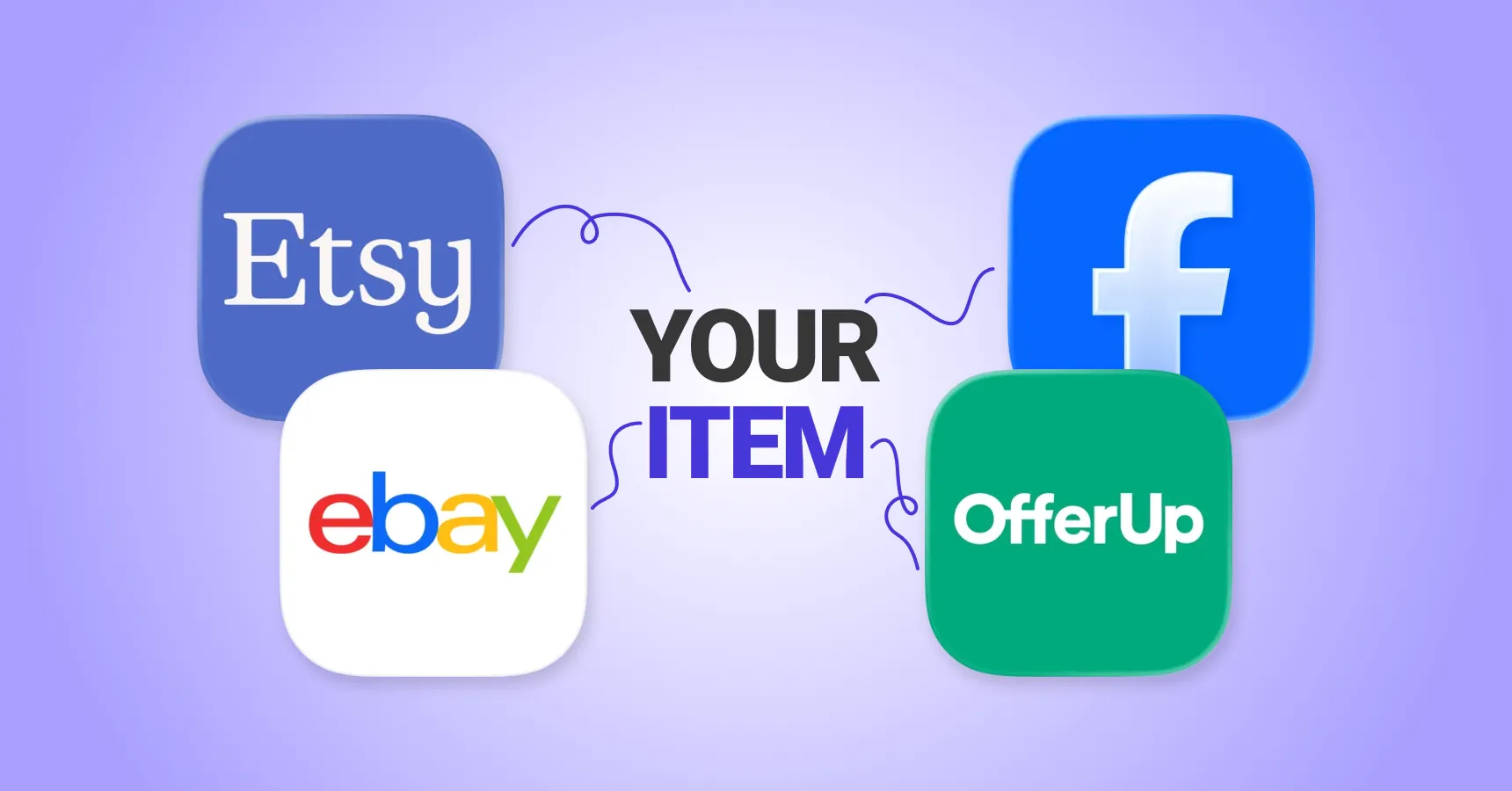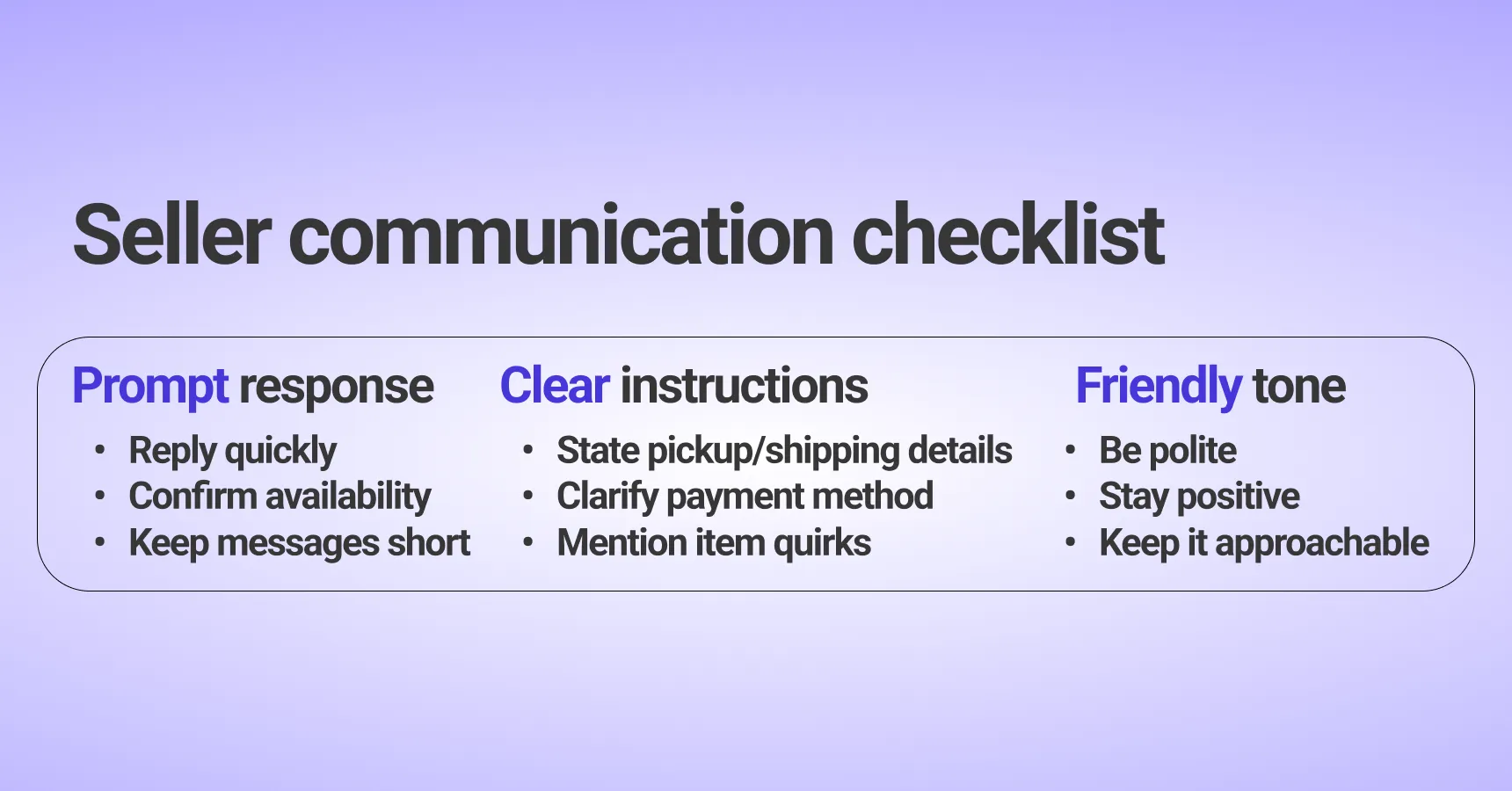How To Sell On Marketplace: Turn Clutter Into Cash

Ever stared at your closet, garage, or even a dusty corner of your home and thought, “Why not make some money off this?” Learning how to sell on marketplace platforms can turn those forgotten items into cash you actually get to keep. It’s not just about snapping a photo and posting it online – there’s a little art to it.
This guide walks through the entire process: picking the right platform, creating listings that grab attention, managing buyers, shipping safely, and even scaling your sales over time. Think of it less as a chore and more as a mini adventure from clutter to cash.

What online marketplaces are really like
Before diving in, it’s worth stepping back for a moment. What exactly is an online marketplace? At its core, it’s a digital space for buyers and sellers – like a flea market that never closes. But unlike Saturday’s chaos at your local market, online marketplaces reach far beyond your neighborhood.
Marketplaces come in different flavors. Peer-to-peer platforms, such as Facebook Marketplace or OfferUp, let regular folks sell directly to other folks. Then there are ecommerce marketplaces like Etsy or Amazon, where sellers often have a polished shop, sometimes shipping nationwide. Each type has its perks. Local marketplaces are faster, simpler, and avoid shipping headaches. Larger platforms have more traffic but also stiffer competition.
Why bother with online marketplaces at all? For starters, the barriers to entry are low. No storefront, no expensive website, no huge budget needed. You set what you sell, when you sell it, and at what price. Flexibility, freedom, and extra cash – all in one.
But beware: some people list items and wonder why no one bites. The key is understanding the rhythm of a marketplace – what buyers look for, how items show up in searches, and which strategies actually close sales.
Choosing the right marketplace
So, you’re ready to sell. But which platform should you pick? Not every marketplace suits every item or seller. Choosing wisely can mean the difference between a quick sale and weeks of unanswered messages.
Start with your product. Big, bulky items like furniture often do better on local platforms – shipping a sofa is nobody’s idea of fun. Smaller, collectible items, vintage clothes, or handmade crafts might thrive on Etsy or eBay. Match the item to the buyer who actually wants it.
Next, look at fees and policies. Some marketplaces take a cut of each sale, others don’t, but might have fewer buyers. Timing matters too. Some platforms have spikes in traffic during weekends or holidays. And shipping – if packing boxes isn’t your thing, stick to local pickup.
One pro tip: don’t be afraid to try multiple platforms. Cross-listing increases visibility and can speed up sales – but keep careful track to avoid selling the same item twice.

How to make your listing stand out
Here’s where things get fun. You’ve chosen your marketplace; now your listings need to work for you. Posting a photo and price sometimes works – but consistent sales come from listings that really connect. This is where knowing how to sell on marketplace platforms turns theory into real results.
- Start with the title. This is your first impression. “Red Leather Chair” beats “Chair for Sale” every time. Include details like size, brand, or condition. This tiny bit of effort makes your listing show up in search results.
- Next, the description. Don’t just list features; tell a little story. Instead of “Used blender”, try “Compact blender in excellent condition – perfect for morning smoothies”. Mention dimensions, condition, and even minor imperfections – honesty builds trust.

- Photos matter more than you might think. Bright, well-lit images from multiple angles win attention. A single blurry photo in a dark room? Instant scroll. Close-ups, clean backgrounds, and even a staged scene help buyers imagine the item in their home.
- Pricing requires homework. Check similar items first. Too high? Your listing gathers dust. Too low? You leave money on the table. Consider demand and seasonality – people buy patio furniture in summer, not December.
- Finally, categories and tags. They’re small but critical. Use relevant ones, sprinkle in keywords buyers search for.
Handling buyers like a pro
Once your listing goes live, the messages usually start trickling in – sometimes slowly, sometimes all at once. And this part can feel like a job interview mixed with customer service if you’re not prepared. The best rule? Respond sooner rather than later. People scroll fast online, and attention spans are short.
Buyers come with all kinds of personalities – curious, cautious, enthusiastic, or the classic “Is this still available?” ghoster. A warm, straightforward message can turn a hesitant browser into someone willing to drive across town to pick the item up.
Negotiation happens on almost every platform, so don’t take it personally. Some buyers will shoot their shot with a lowball offer. You can gently push back with something like: “Thanks for reaching out! It’s in great shape, and similar items usually go for around $X”. No drama, no defensiveness. Short and friendly always beats a ten-message debate that drains your energy.
Set expectations early so no one ends up confused. Let buyers know:
- Pickup or shipping;
- Accepted payment methods;
- Any quirks or imperfections;
- When you’re available.
And keep all communication on the platform. It protects both sides and avoids the headache of dealing with unknown phone numbers.
Add a bit of warmth or humor if it feels natural. Buyers are more likely to commit when the person on the other end feels human. A pleasant exchange often leads to a smooth sale and sometimes even a glowing review you didn’t expect.

Getting your items safely to buyers
Local sales are quick and simple, but a little planning goes a long way. Pick a public, well-lit spot where both of you feel comfortable – coffee shop parking lots, busy retail areas, or designated “safe trade” zones work well. Confirm the payment method in advance; cash is easy, but digital payments are fine if agreed beforehand.

Shipping takes a bit more effort, but it expands your reach. Pack items securely: too-big boxes let things bounce around, and fragile items always need padding or bubble wrap. Offer tracking whenever possible – buyers appreciate knowing where their package is, and it protects you if something gets lost.
Set a return or refund policy ahead of time. Even a simple statement like “Returns accepted within 2 days if the item isn’t as described” prevents misunderstandings and shows you’re fair.
Finally, keep buyers in the loop. Update them when you prepare the shipment, drop it off, and share expected delivery times. Small gestures like this build trust, encourage repeat business, and make positive reviews more likely – which means your next sale is easier.
Selling online without losing sleep
Safety comes first. When meeting buyers, stick to public spots and trust your instincts – if something feels off, walk away. Online scams are real, so ignore overpayment offers, fake payment screenshots, and suspicious links. Keep conversations on the platform and share only what’s necessary. Shipping items? Use tracked delivery – it protects both you and the buyer.
Tips to get more eyes and more sales
Once your listings are live, timing can make a difference. Post during peak browsing hours to catch more attention. Cross-listing on multiple marketplaces helps reach a wider audience, but keep track to avoid double-selling. Small updates – like clearer photos or titles – can revive a listing and draw new buyers. Over time, you’ll start noticing patterns and learning what sells best, making online selling smoother and more rewarding.
From clutter to cash: Making it click
Selling online can feel overwhelming at first – so many listings and messages it’s easy to freeze. But once you find your rhythm, it clicks. Pick the right platform, create clear, engaging listings, and reply promptly. Learning how to sell on marketplace platforms successfully makes the whole process feel much more manageable.
Habits matter. Honest descriptions, clean photos, and timely responses build trust. One buyer notices a quick reply, another appreciates careful packaging. Over time, these little touches grow your reputation – often more valuable than pricing alone.
The beauty of marketplaces? Flexibility. Start small, see what works, and expand at your own pace.
Your first online store, simplified
If you’re ready to expand your online selling without holding inventory, dropshipping is an easy way to start. The idea is straightforward: you only buy a product after a customer places an order, and your supplier handles storage and shipping. This means no crowded closets, no long trips to the post office, and no guessing which items will sell.
AliDropship is designed with beginners in mind. It provides a ready-to-use store preloaded with trending products, optimized listings, and automation tools that take care of many time-consuming tasks. With AliDropship, you can:
- Import products from suppliers with just a few clicks
- Automatically update stock and prices
- Process orders and generate invoices
- Run marketing campaigns and track ads
You don’t need coding experience, design skills, or marketing expertise. Simply select the products you want to feature and start promoting your store. By following AliDropship’s system, beginners can get a practical sense of how to sell on marketplace platforms effectively while keeping things low-stress.
Another advantage is access to premium, recognizable products from brands like Levi’s, Calvin Klein, New Balance, or Tommy Hilfiger. Selling items that buyers already trust can make your listings more appealing and increase the chances of a sale, without months of trial and error.

Automation is a major benefit. AliDropship handles repetitive tasks so you can focus on the parts of selling that matter most: finding products that perform well, refining listings, experimenting with pricing, and scaling your marketing. Whether you want to test the waters or grow into a full online store, AliDropship keeps the process straightforward and low-risk.
In short, AliDropship makes dropshipping accessible for beginners. You can apply your knowledge of creating listings, managing buyers, and understanding demand, while letting the platform handle logistics. It’s an easy way to expand your online business without the usual stress of traditional ecommerce.
Ready to start your first dropshipping store? Explore AliDropship today and see how easy it can be to sell without the usual hassle.
How do I sell on Facebook Marketplace for beginners?
How much does Facebook Marketplace charge to sell?
What are the risks of selling on Facebook Marketplace?
What is the safest way to receive money when selling on Marketplace?
What is the safest way to receive money when selling on Marketplace?









